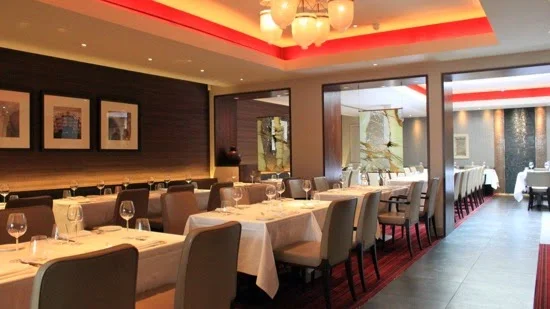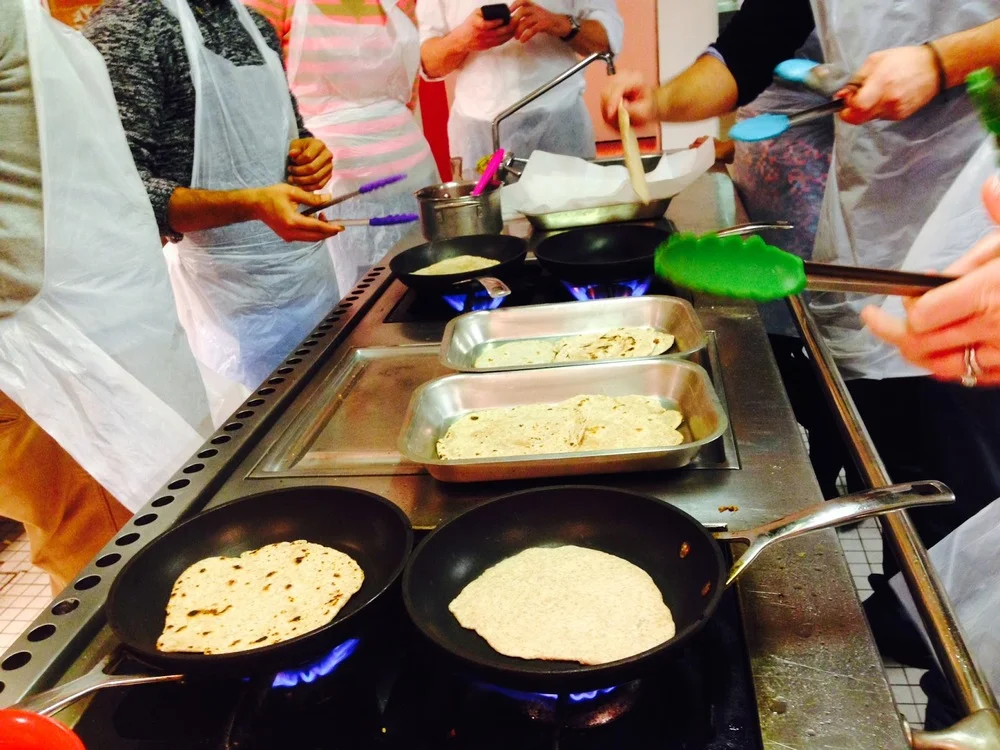The School of Wok
To celebrate Chinese New Year and the year of the goat, we headed to The School of Wok to brush up on her cooking skills and pick up some tips in a Wok Masterclass!

Traditionally, Chinese New Year is celebrated with the intention to bestow good fortune upon those celebrating in areas of health, wealth and prosperity. Some legends speak of the 'Year' as a mythical beast you need protecting from which fears the colour red, fire and loud noise hence the inclusion of those elements (fire and fireworks, red lanterns and red packets) in Chinese New Year celebrations.
To celebrate Chinese New Year this year, The School of Wok invited us to a Chinese New Year themed Wok Masterclass. Having made my fair share of stir fry dishes, I am keen to learn some tips for wok frying and learning more about the preparation of Chinese cuisine. They promise it to be informative but fun which is just the experience I'm after.
The School of Wok have been open since May 2012 but Head Chef Jeremy Pang has been teaching inside people's homes (which is arguably where the concept was born) from 2009. As well as their 3 hour/full-day/weekend courses for budding chefs and casual cooks they also offer Event and Private Hire and Professional courses.


Today's Chef: Stefan Lind
The Recipe:
- Prawn and pine nut lettuce wraps (signifying rising fortune)
- Beggars baby chicken (signifying family togetherness)
- Spinach & goji berry broth
- Served with wontons and steamed rice
When we arrived, aprons were laid out for each of us by our chopping boards with cleavers ready for use. I certainly hadn't used one of those before!


We washed our hands, donned our aprons and sipped on jasmine tea, water and soft drinks before our first demonstration of cleaver techniques. The cleaver was surprisingly easy to use and is really effective for slicing and dicing if you use the claw technique. Oriental cuisine is all about the preparation, to prepare the asparagus we bent them until they snapped naturally then chopped them into small chunks, leaving the tops as they were. Next, we learned a clever tip: to peel with blunt utensils and so we were peeling ginger with a teaspoon.
On the menu is stuffed poussin which is to be baked inside dough. We made the dough by mixing water and flour, then kneading and rolling with a rolling pin then wrapped in large lotus leaves and then carefully wrapped in dough. We were then told an Ancient Chinese tale about a beggar and an emperor discovering the beggar's chicken recipe and how it was formed into a traditional meal.
Soon after, we began to dice the spring onion, there were lots of tears, mostly from me.
Tip: breathe through the mouth.
The most challenging part for me was preparing the wontons as they had to be prepared in a specific way and much of ours were folded more like tortellini rather than wontons (there's a very fine line).





The wine pairing/tasting was brought to us in conjunction with independent company A Grape Night In and was a great addition to the day's activities. We tried a dry Australian Reisling, a floral Argentinian Torrentes and finally a red ruby coloured Italian Canonnau de Sardegn. The lady from the company was friendly and happy to answer all questions and give advice.
It was now time to stir fry with the wok and wok spoon in an adjoining cooking space. The asparagus, garlic, pine nuts, raw prawns and spring onions with soy sauce were already laid out for us and were to be enjoyed later inside lettuce wraps.
Every pair is guided to a work top space with a wok and electric hob after a quick, simple demonstration of expert wok frying from our Chef.



Some wok tips:
- Use thin woks, slice and dice all ingredients thinly including meat.
- Add oil as you go. A quarter of a teaspoon each time.
- Use vegetable oil, although nut oil is also good.
- Invest in a wok spoon.
- As soon as the oil starts to smoke, it's ready for ingredients.
- Push food to the back of wok when adding new ingredients as it is cooler.
We added goji berries and Chinese vegetables including pak choi, kai lan, choi sum and Chinese spinach to broth which tasted fresh clean and delicious with complementing flavours.




I quickly learned that my chopstick skills had not improved since the last time I tried to use them but everybody was too busy indulging in the delicious crispy wontons, sweet and flavoursome broth, tasty lettuce wraps and soft, tender chicken to notice!
We parted with a red envelope which is traditional at Chinese New Year as well as a copy of the recipe with lots of useful tips and a list of wines to pair and not to pair with Asian flavours. Oh and an unexpected 5% discount voucher, always nice!
School of Wok Cooking Hints and Tips!
When cooking rice:
- Put your rice in a deep bowl and in your sink, run the cold tap water over it. Once the bowl is full of water, use your fingers to swish the rice around. The water will start getting murky. Pour this water out. Repeat the process till the water is mostly clear. This will take at least 4-5 washes.
- Put the rice in a heavy gauge pan that has a flat bottom. This bit is important. If your pan is made out of thin metal, you rice will get nicely burnt at the bottom while the grains at the top may not cook properly. You also need one with a tight lid, or else the precious steam will leak and your rice won’t cook right.
- Add in the water and put the pan on medium high heat. Wait until the water boils and starts bubbling. Cover with a tight lid, turn the heat down to medium and let it just simmer until the water level reduces to the same level as the rice.
- Now take the rice off the heat, leaving the lid on and let it steam for 10 minutes or so. This will help the rice to ‘settle’ so you don’t have dry grains on top and wet grains at the bottom.
- Your rice is ready to serve with whatever you choose. This method of cooking rice is known as the 'absorption method'.
Extra Tips:
- A bruised stick of lemon grass or a pandan leaf added to the rice while it’s cooking works wonders. The subtle fragrance and flavour is amazing.
- Leftover rice can be put in the fridge and it will make splendid fried rice the next day.
- The more rice you cook, the more the ratio of rice: water increases. For 3 + cups of rice, use a rice:water rations of 1:2.
Happy Chinese New Year!!

A special thanks to The School of Wok for inviting us along and sharing their Chinese New Year celebrations with us.
Website: www.schoolofwok.co.uk
Twitter: @schoolofwok
Facebook: facebook.com/schoolofwok






